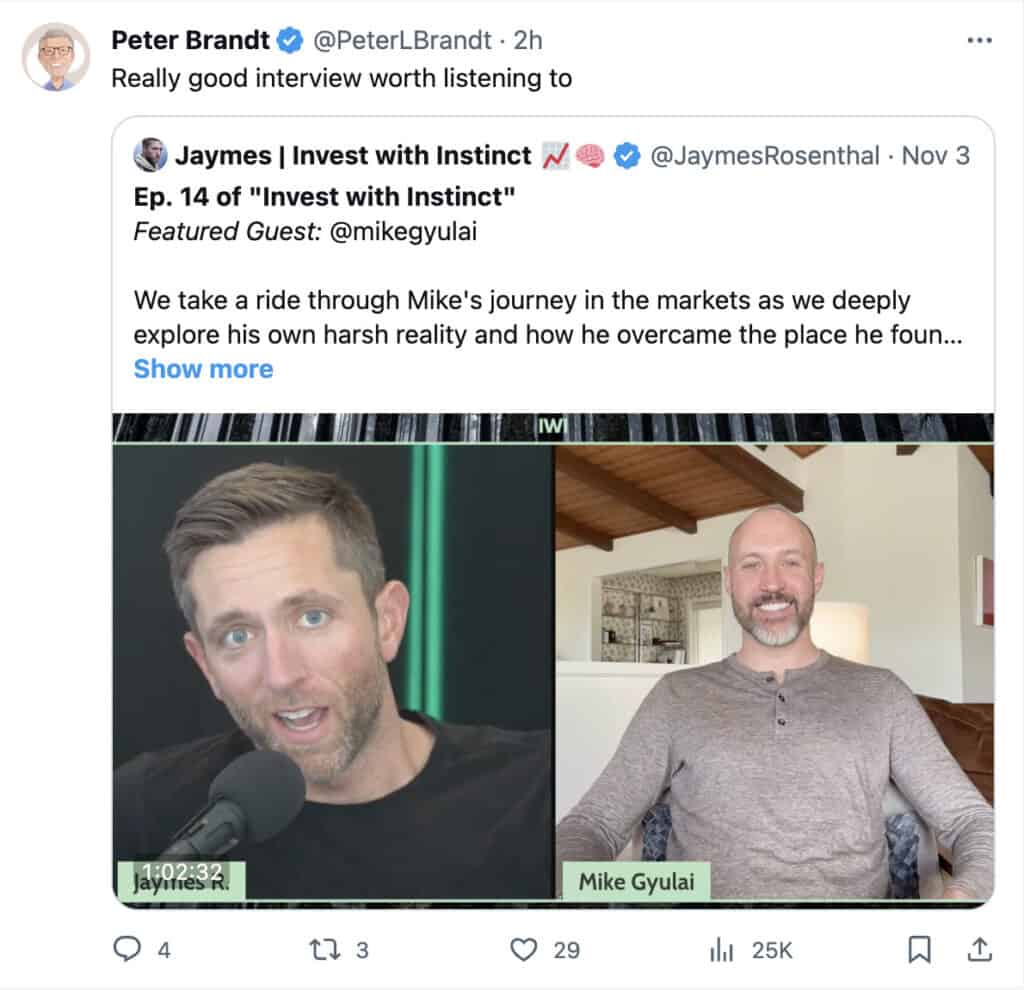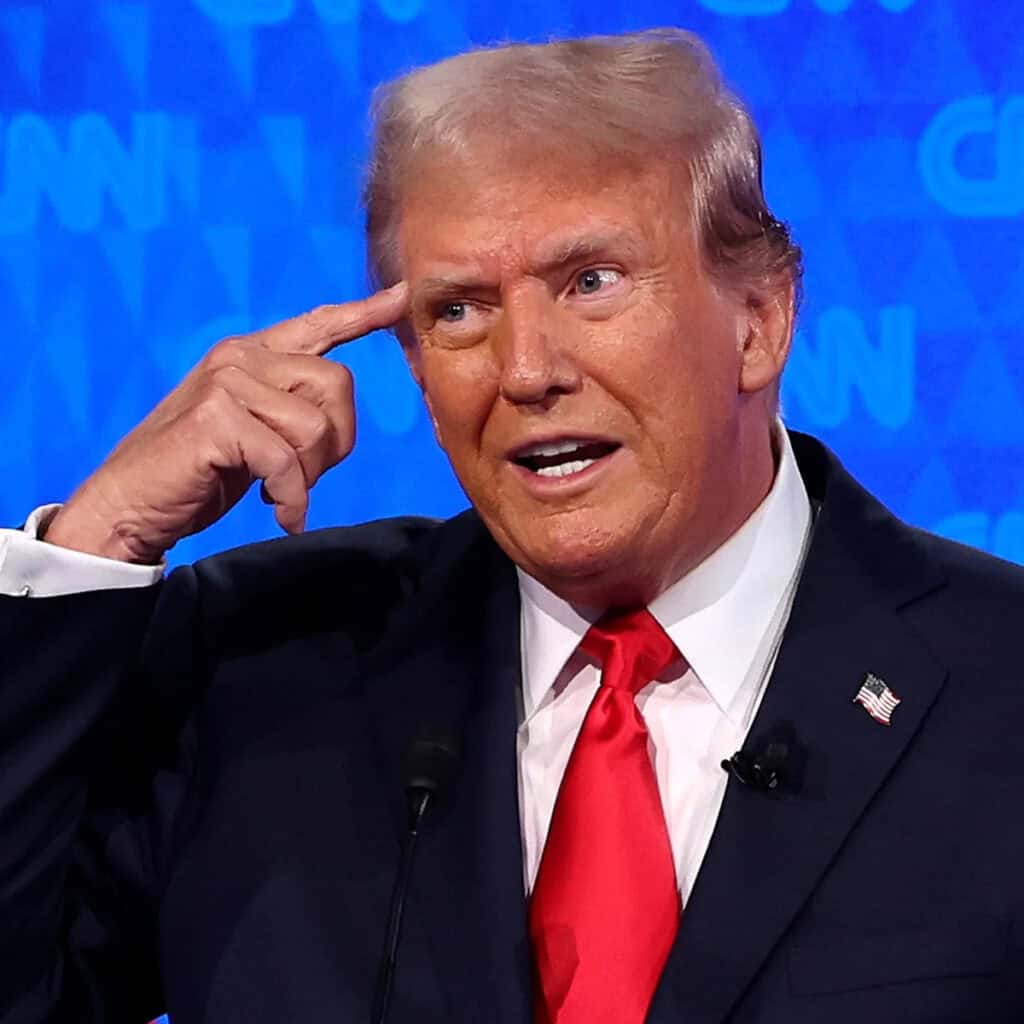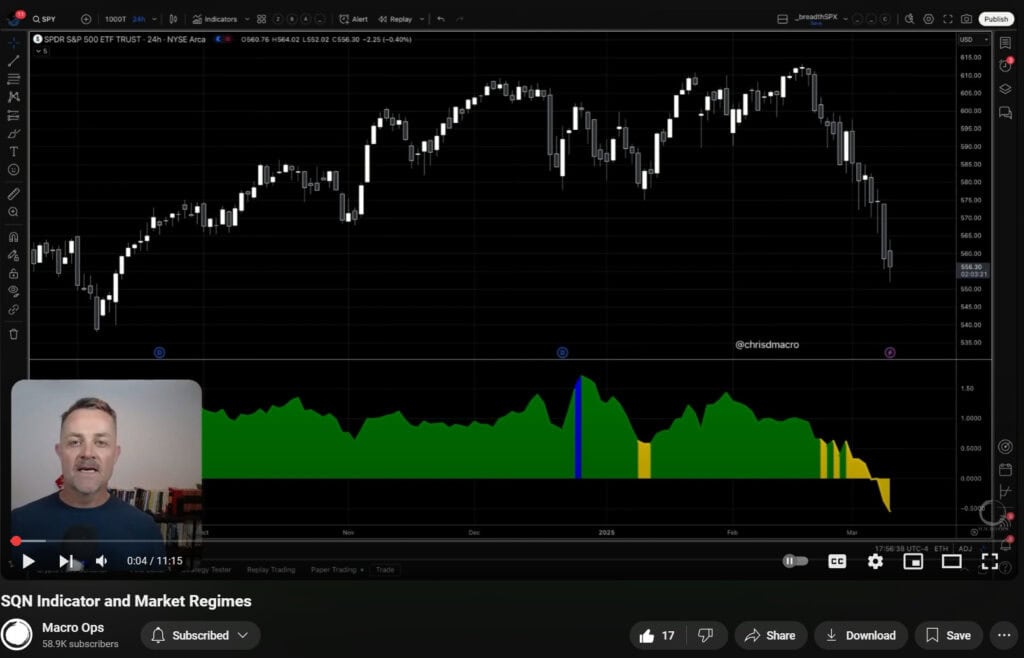The science journal Nautilus published an article the other month about a team of researchers whom, following WW2, set out to uncover the unique psychological traits at the root of authoritarianism and prejudice. Born from this effort were several “tests of perception”.
Many of these tests proved controversial at the time but one test in particular is relevant to those of us who play in markets. This study is the famous cat-dog experiment led by Psychologist Else Frenkel-Brunswik.
In this study, Else’s team showed a series of sketches of a single animal to a group of participants. At first, the animal shown clearly resembles a cat. After each sketch was displayed the participants were asked to name the animal. Each replied confidently that the animal was a feline.
The rub was that in each successive picture, a tiny feature would change. At first, it would be an ear, then maybe the shape of the tale, and then a slight shift of the muzzle… until the middle of the deck when the animal pictured became indeterminate.
This progressive shapeshifting would continue until the end when the animal completed its transformation into a dog.
The interesting part of the study, and why it’s relevant to us as traders and investors, is that the researchers found that the participants were very reluctant to change from their first answer until the very end of the deck, well after the point where the sketch began to plainly resemble a dog.
Not only that, but many of the participants became unnerved and agitated while going through the middle of the stack; as if they were being forced into mental contortions to justify sticking with their initial response.
Else noted that participants showed “a preference to escape into whatever seems definite.” Her concluding thoughts from the study were that a key trait of an authoritarian was their intolerance for uncertainty… And, also, importantly, that we all have a little authoritarian in us.
Change cat-dog to bull-bear and we’re right into markets. We make bets, form opinions, and all too often, unconsciously cling to these opinions, even though the picture (or inputs) have shifted. The problem is that we’re not seeing the environment with fresh eyes. We’ve already formed our opinion and the pull “to escape into whatever seems definite” is strong, and it alters our perception of the world. Basic sunk costs and all that jazz.
This topic of uncertainty… of handling the mushy grey areas of markets, where you once had a strong opinion on trend but are now just not so sure… well, this is something I write about a lot. For instance, we have this section from my piece on The Naked Sniper:
And this is what I now know. This is the not a secret, secret sauce of trading.
Trading (and investing) is not about knowing things. That’s like maybe 10% of the game if I’m being generous.
You know what’s a more apt descriptor of a successful trader?
An UNcertainty manager. Someone who can successfully manage not knowing things. Someone who can make money over a full cycle, while knowing that he only knows maybe 30% of everything that’s critically important to his trade or investment successfully working out.
There are two big takeaways from this that I believe if correctly applied can help us retain our mental acuity. One of these is to treat our opinions just as we treat our positions… we have clearly predefined stops, whether that be a time stop, a predetermined change in the underlying data, or a level in the market that if reached would suggest we take a step back and seriously assess our priors.
Mark Spitznagel wrote in The Dao of Capital that the most valuable lesson he learned from his Chicago trading pit mentor, Everett Klipp, was that “you’ve got to love to lose money.”
Klipp was talking about being quick to take small losses, but let’s just replace “lose money” with “being wrong”. We have to love being wrong… this game isn’t for feeding egos, and to be right over the long run you need to be willing to be wrong a lot in the present… which reminds me of this great story told by Malcolm Gladwell about George Soros, where he writes:
An old trading partner of Taleb’s, a man named Jean-Manuel Rozan, once spent an entire afternoon arguing about the stock market with Soros. Soros was vehemently bearish, and he had an elaborate theory to explain why, which turned out to be entirely wrong. The stock market boomed. Two years later, Rozan ran into Soros at a tennis tournament. “Do you remember our conversation?” Rozan asked. “I recall it very well,” Soros replied. “I changed my mind, and made an absolute fortune.” He changed his mind!
This fact has been born out by research performed by Philip Tetlock who found that rapid belief-updating is 3x more important for successful forecasting than intelligence. The truth is that it’s not about consistently nailing grand forecasts at all. Rather it has much more to do with attunement, and quickly adjusting when needed to stay in the flow with reality as it unfolds. Soros was the GOAT at this, and it should be a guiding North Star for us as well.
Like writers, we need to eagerly kill our babies, love to be wrong, and be willing to rapidly update our beliefs when needed.
Secondly, we can more effectively update our priors and accept we’re wrong when we have a simple and concise funnel for making decisions. The most important aspect of this is to know what the critical information inputs in our decision tree are and limit these inputs to a manageable amount less we make ourselves susceptible to analysis paralysis and/or confirmation bias.
German psychologist, Gerd Gigerenzer, calls this “The less-is-more Effect”. If you’d like to dive into this then I recommend picking up his book “Gut Feelings”. Essentially what the less-is-more effect refers to is that heuristic decision strategies can yield more accurate judgments than strategies that utilize large amounts of information.
The way I think about this in trading and investing is that if you need 20 pages of notes to convince you to put on a trade then you have no f’ing clue what you’re doing… This is what the famous psychologist Paul Slovic discovered in his study of professional horse bettors, which is that additional information beyond a minimal amount not only didn’t improve their predictive abilities but it made them a lot more confident than they should have been. This of course led to poorer results in the form of misplaced bet sizing.
The Macro Game is rife with noise, nonsense, and distracting shiny objects. After roughly 15 years of playing this game, I’ve concluded that the number one cognitive blindspot that kills the vast majority of traders and investors is that most unconsciously play this game to prove to themselves and others just how smart they are. And that type of game is based on lots of false certainty…
But markets are dynamic non-linear complex ego incineration machines. And if your sole objective isn’t to make money and let ego be damned… then, well, you’re in for a rough go of it.
An all-too-common example of playing the “I’m smart” versus the “make money” game is the macro analysis, typically in the form of a 50-slide PowerPoint deck, that uses 50 different indicators to say the same damn thing.
I get it, I have a fetish for charts too. I mean, I publish a dozen of them every Monday. But when it comes to proper analysis — if we’re playing the make money game — then our process needs to be laser-focused on our system, our funnel of analysis.
This funnel should be comprised of a small but well-rounded grouping of data points that look at key markers from enough angles to guard against anomalous episodes (the last 3 years in macro being a prime example of an anomalous episode) and no more, lest we breed false confidence.
These data points should be thoroughly tested. So you’re intimate with their strengths and shortcomings. And more importantly, how they all complement one another (aka. Conditional Edge Stacking), which then should give you a sense of how to read and make decisions using this system (ie, level of appropriate conviction, which strategy to deploy, subsequent bet sizing, etc…).
This is what we attempt to do with our evolving HUD, our weekly Play The Player report, and our overall approach to research and markets. Einstein was onto something when he said “everything should be made as simple as possible, but no simpler.” This is a far less sexy approach than your popular “Macro Professor” on Twitter who loves sharing his airy pontifications about the world. But it works… One gets you attention, the other makes you bacon.
And remember, the point of analysis isn’t to form any level of certainty about a market outcome. Certainty isn’t the game here. We’re UNcertainty managers knowingly involved in a wicked game after all. So, false-certainty, no thank you… rather we’re concerned with rough odds and probabilities, specifically downside risks… risks of ruin… risks of getting Archegos’ed, as well as skew, tail events, and bet sizing, etc…
Not to mention there’s the idea that focused attention on a few things naturally breeds a kind of deepening mastery. While having no clear framework and therefore giving away your awareness to every new flashy data point that prints on your BBG terminal, well, that’s like digging a hole a mile wide and a quarter inch deep… It’s similar to Bruce Lee’s point about kicking people:
I am not afraid of a person who knows 10000 kicks. But I am afraid of a person who knows one kick but practices it for 10000 times.
So when you sit down at your desk, put your ego aside. Learn to relish being wrong. Simplify and hardcode your analysis funnel. And then aim to execute it ruthlessly as you play the make-money game of edges and probabilities.
Do that and you’ll have no problem calling a dog a dog, a bull a bull, a cat a cat, a bear a bear, or just simply admitting that you don’t know when things are a bit unclear.
If you’d like to join our group of uncertainty managers, click the link below and sign up.
Thank you for reading.
Enrollment into our Collective is open until the end of this week. The Collective includes all of our research, a full library of reports and videos on theory and strategy, our proprietary market dashboard, plus our internal slack where the team and I, plus fund managers and die-hards from around the world talk shop, exchange ideas, and shoot the shit. Our book is up +34% ytd and if you’re interested in joining our crew, just click the link below. Looking forward to seeing you in the group.








